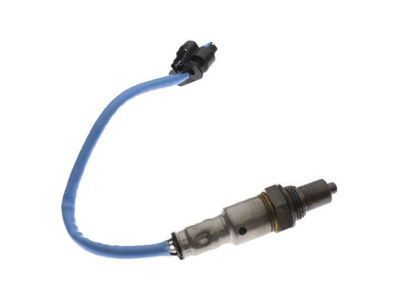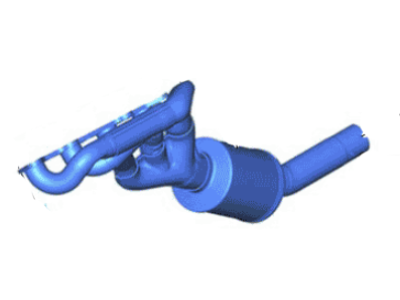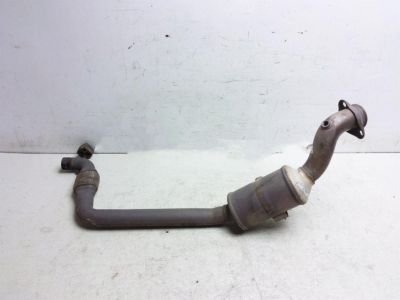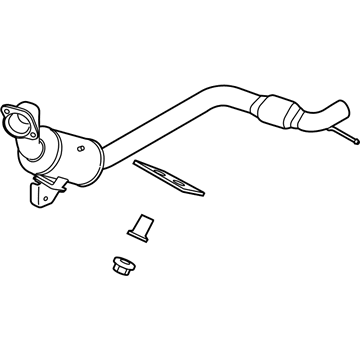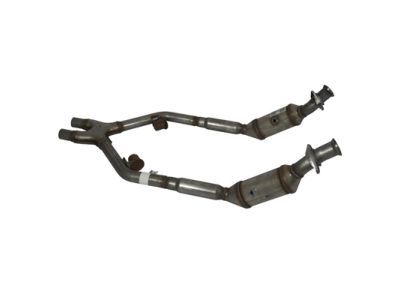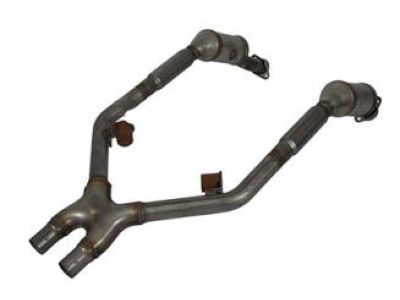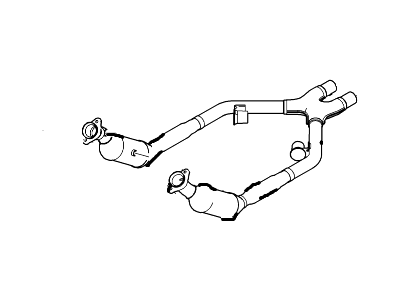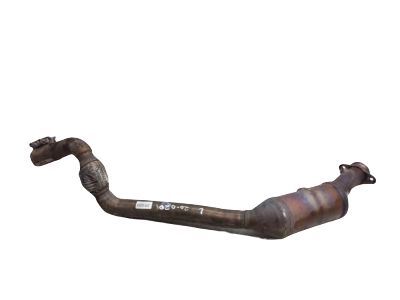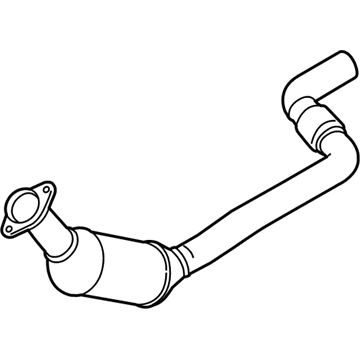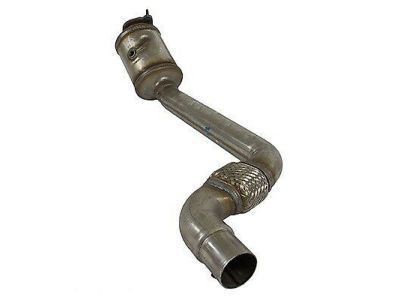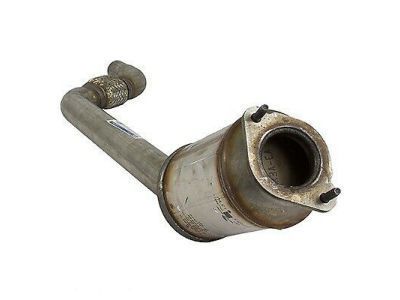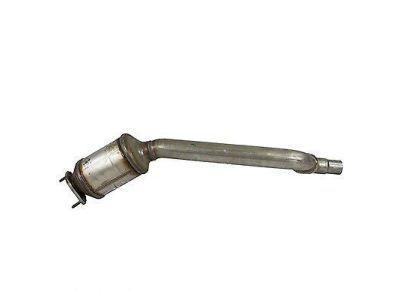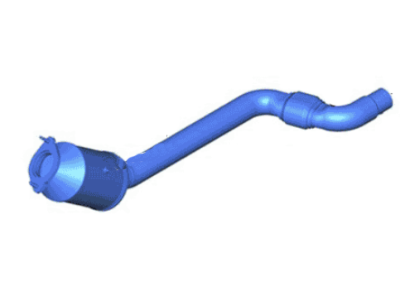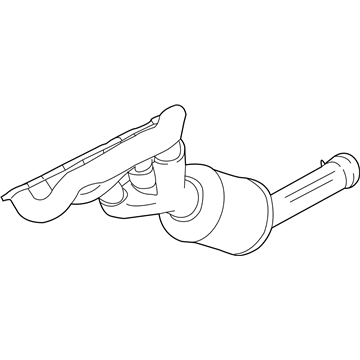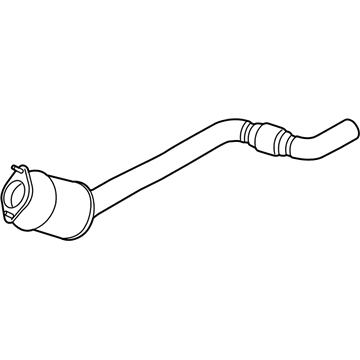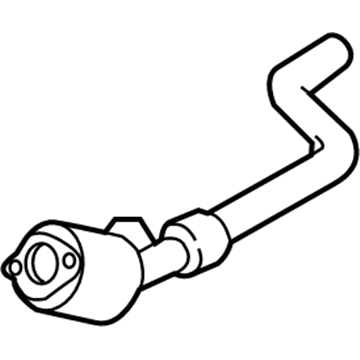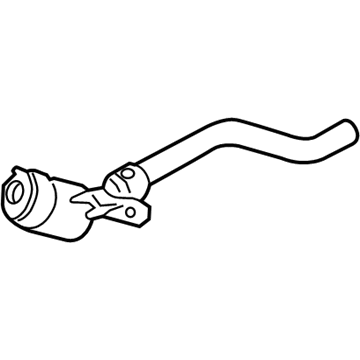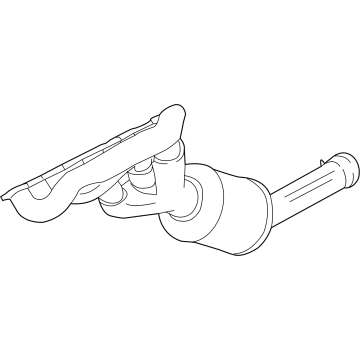

My Garage
My Account
Cart
Genuine Ford Mustang Catalytic Converter
Cat. Converter- Select Vehicle by Model
- Select Vehicle by VIN
Select Vehicle by Model
orMake
Model
Year
Select Vehicle by VIN
For the most accurate results, select vehicle by your VIN (Vehicle Identification Number).
83 Catalytic Converters found
Ford Mustang Exhaust Manifold And Catalyst
Part Number: JR3Z-5G232-B$430.13 MSRP: $537.14You Save: $107.01 (20%)Ships in 1-3 Business DaysFord Mustang Catalytic Converter Assembly
Part Number: FR3Z-5E212-D$1481.51 MSRP: $1876.29You Save: $394.78 (22%)Ships in 1-3 Business DaysFord Mustang Catalytic Converter Assembly
Part Number: BR3Z-5F250-B$1026.34 MSRP: $1295.71You Save: $269.37 (21%)Ford Mustang Catalytic Converter Assembly
Part Number: FR3Z-5E213-A$955.01 MSRP: $1211.43You Save: $256.42 (22%)Ships in 1-3 Business DaysFord Mustang Catalytic Converter Assembly
Part Number: JR3Z-5E212-B$725.06 MSRP: $911.43You Save: $186.37 (21%)Ships in 1-3 Business DaysFord Mustang Catalytic Converter Assembly
Part Number: JR3Z-5E212-A$725.06 MSRP: $911.43You Save: $186.37 (21%)Ships in 1-3 Business DaysFord Mustang Exhaust Manifold And Catalyst
Part Number: JR3Z-5G232-C$1978.91 MSRP: $2517.43You Save: $538.52 (22%)Ships in 1-3 Business DaysFord Mustang EXHAUST MANIFOLD AND CATALYST
Part Number: JR3Z-5G232-E$1978.91 MSRP: $2517.43You Save: $538.52 (22%)Ships in 1-3 Business DaysFord Mustang Catalytic Converter
Part Number: JR3Z-5E212-J$2989.70 MSRP: $3800.00You Save: $810.30 (22%)Ships in 1-3 Business DaysFord Mustang Catalytic Converter Assembly
Part Number: JR3Z-5E212-G$1628.90 MSRP: $2064.29You Save: $435.39 (22%)Ships in 1-3 Business DaysFord Mustang Catalytic Converter
Part Number: JR3Z-5E212-C$1103.62 MSRP: $1394.29You Save: $290.67 (21%)Ships in 1-3 Business DaysFord Mustang Catalytic Converter
Part Number: FR3Z-5E213-C$983.01 MSRP: $1247.14You Save: $264.13 (22%)Ships in 1-2 Business DaysFord Mustang Catalytic Converter Assembly
Part Number: JR3Z-5E212-F$2218.02 MSRP: $2815.71You Save: $597.69 (22%)Ships in 1-3 Business DaysFord Mustang Catalytic Converter Assembly
Part Number: FR3Z-5E212-L$1036.42 MSRP: $1308.57You Save: $272.15 (21%)Ships in 1-3 Business DaysFord Mustang Catalytic Converter Assembly
Part Number: JR3Z-5E212-D$1431.78 MSRP: $1812.86You Save: $381.08 (22%)Ships in 1-3 Business DaysFord Mustang Catalytic Converter Assembly
Part Number: FR3Z-5E212-F$2259.46 MSRP: $2868.57You Save: $609.11 (22%)Ships in 1-3 Business DaysFord Mustang EXHAUST MANIFOLD AND CATALYST
Part Number: PR3Z-5G232-A$873.25 MSRP: $1107.14You Save: $233.89 (22%)Ships in 1-2 Business DaysFord Mustang Catalytic Converter Assembly
Part Number: JR3Z-5E212-K$2888.45 MSRP: $3670.86You Save: $782.41 (22%)Ships in 1-3 Business DaysFord Mustang Catalytic Converter Assembly
Part Number: FR3Z-5E213-B$983.01 MSRP: $1247.14You Save: $264.13 (22%)Ships in 1-2 Business DaysFord Mustang Exhaust Manifold And Catalyst
Part Number: JR3Z-5G232-A$971.81 MSRP: $1232.86You Save: $261.05 (22%)Ships in 1-3 Business Days
| Page 1 of 5 |Next >
1-20 of 83 Results
Ford Mustang Catalytic Converter
Catalytic converter is an essential part of the exhaust and emission control system of Ford Mustang and plays the role of reducing dangerous gases which are emitted while burning the fuel by changing it into harmless gases like water vapor and Carbon Dilaurate. This change is as a result of a chemical process which uses catalysts that are usually in the form of platinum, palladium and rhodium supported on a honeycombed structure. The Ford Mustang vehicles through time have incorporated different varieties of catalytic converters, the two-way and the three-way and the three way have been used since 1981. As for the high flow catalytic converters there is the range of converters available for improving the exhaust volume and increasing horsepower, but they have to meet legal requirements and do not really work if not accompanied by other modifications of the engine. The Ford Mustang catalytic converter should ideally be checked and replaced periodically so as to ensure that the car's efficiency and the emissions given off conform to the set standards.
We provide a wide range of Ford Mustang Catalytic Converter at the best prices possible. If you need Ford Mustang Catalytic Converter, you can shop with confidence on our website. All our OEM parts come with a manufacturer's warranty and are delivered to your door step with a fast delivery service.
Ford Mustang Catalytic Converter Parts Questions & Experts Answers
- Q: What is the general description and function of a catalytic converter on Ford Mustang?A:The catalytic converter is an emission control device in the exhaust system that reduces pollutants from exhaust gases, with two types, the oxidation catalyst, which reduces hydrocarbon and CO by oxidation and convert them into water vapor and carbon dioxide and the reduction catalyst, which reduces the oxides of nitrogen by non-oxidation and gives Nitrogen and Oxygen. These catalysts are integrated in a single three way catalyst which deals with all the three pollutants. The functioning of the catalyst depends on the degree of its oxygen supply; its efficiency is achieved at the fuel/air equivalence ratio of 14.7. If the air/fuel mixture is very weak it will be possible to store more and more of excess oxygen in the catalyst chamber, while, if the mixture is poor or rich in fuel it is possible to 'use' all the oxygen in the catalyst and so make it ineffective. The storage capacity of the catalyst decreases over time, as is detected by the PCM through the upstream and downstream Oxygen Sensors; the sensors send a Diagnostic Trouble Code when the catalyst is failing and the Malfunction Indicator Light is on. All of the models equipped with two catalytic converters that have inlet pipes welding to each catalyst, while different connecting to the outlet pipes corresponding to the engine type. Given the complexity of the converter, it is advisable to seek professional help when the component is being tested for it, usually, entails the use of specific tools. As, for example, when working on the underbody parts, it is important to carry out monthly inspections of leaks, corrosion and damages. Although failures are rare, plugged converters can be diagnosed with reference to a vacuum gauge to check the exhaust impediments. Replacement procedures include making sure that the exhaust system is cool, disconnecting the oxygen sensor, removing the entire catalyst assembly, and then checking for signs of corrosion on the fasteners before the procedures of installation are done in the reverse order of removal of the fasteners and then checking for tightness.
Related Ford Mustang Parts
Browse by Year
2024 Catalytic Converter 2023 Catalytic Converter 2022 Catalytic Converter 2021 Catalytic Converter 2020 Catalytic Converter 2019 Catalytic Converter 2018 Catalytic Converter 2017 Catalytic Converter 2016 Catalytic Converter 2015 Catalytic Converter 2014 Catalytic Converter 2013 Catalytic Converter 2012 Catalytic Converter 2011 Catalytic Converter 2010 Catalytic Converter 2009 Catalytic Converter 2008 Catalytic Converter 2007 Catalytic Converter 2006 Catalytic Converter 2005 Catalytic Converter 2004 Catalytic Converter 2003 Catalytic Converter 2002 Catalytic Converter 2001 Catalytic Converter 2000 Catalytic Converter 1999 Catalytic Converter 1998 Catalytic Converter 1997 Catalytic Converter 1996 Catalytic Converter 1995 Catalytic Converter 1994 Catalytic Converter 1982 Catalytic Converter 1981 Catalytic Converter 1980 Catalytic Converter
